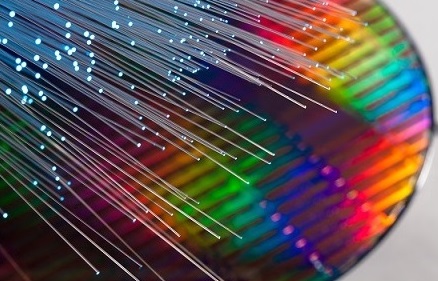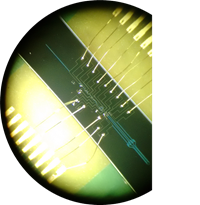
Quantum Key Distribution (QKD)
In a society based on the continuous exchange of sensitive data and information, the importance of secure and trustable information is essential. Quantum cryptography, a branch of Quantum Communications opened a new era in the security of our information.
Exploiting Quantum Physics, it is possible to share data in an unconditionally secure way, no longer based on mathematical assumptions, but founded on the basic principles of Quantum Mechanics.
The transmitter, usually called Alice, exploiting the Quantum principles, can establish an unconditionally secure key with the receiver, commonly called Bob.
This key used with the One Time Pad encryption technique permits to encrypt and decrypt messages in an uncrackable way. Common QKD protocols use a polarization encoding scheme, where the logical bits are encoded in the polarization state of photons. In the case of optical fiber link it is preferable to use other degrees of freedom like phase or time, which are more robust in the fiber transmission.
One of the objectives of the FS E is focused in increasing the performance of the optical fiber Quantum key Distribution (QKD) systems. By exploiting high-dimensional QKD protocols (space as a new degree of freedom in higher order mode (HOM) fibers and multi core fibers (MCF)), we can encode more information per photon allowing higher channel capacity and higher secret key rate.

Moreover the global scenario of QKD is looking forward the miniaturization of transmitters and receivers on photonic chips for a large scale distribution. In this view, we are working on the d
esign and in the fabrication of high performance silicon photonic chips, which will be used in the real QKD applications (SPOC link).
Another task of the group is related to a development of a high efficient wavelength conversion for high speed single photon detection in order to increase the final performance of the QKD system. Using silicon chips it is possible to convert classical telecommunication wavelength (1310 and 1550) to a visible one, in which the actual technology related to the detectors is more efficient and with best performance.
Single photon sources (SPS)
Single photons and entanglement photon states are considerable essential both for fundamental physics studies, for quantum communications and application like computation and computing.
One of the simplest way to create correlated photon pairs suitable for such application, is represented by the nonlinear process of spontaneous four-wave mixing. This effect can be exploited both in optical fibers and in photonics waveguides (different materials present different characteristics). Detection of one photon of the pair can be used to herald the presence of the other, in order to realize a probabilistic heralded single photon source. Moreover, both photons can be used as an entangled photon pair, if the source was design with special characteristics in order that the two photons present a correlation in one or more degree of freedom.
In our research we are investingating new silicon waveguides, trying to achieve a faster and probabilistic single photon source. A theoretical model, which demonstrates how the dispersion characteristic and other parameters of an optical fiber and of a waveguide influence the properties of the photon pair state, is considered and investigated. A corresponding experimental work is carried out in our lab, in order to achieve the predicted results. Furthermore, we are also investigating single photon sources in special fiber, like higher order mode fiber (HOM) where a multi-mode interaction can generated particular quantum states.